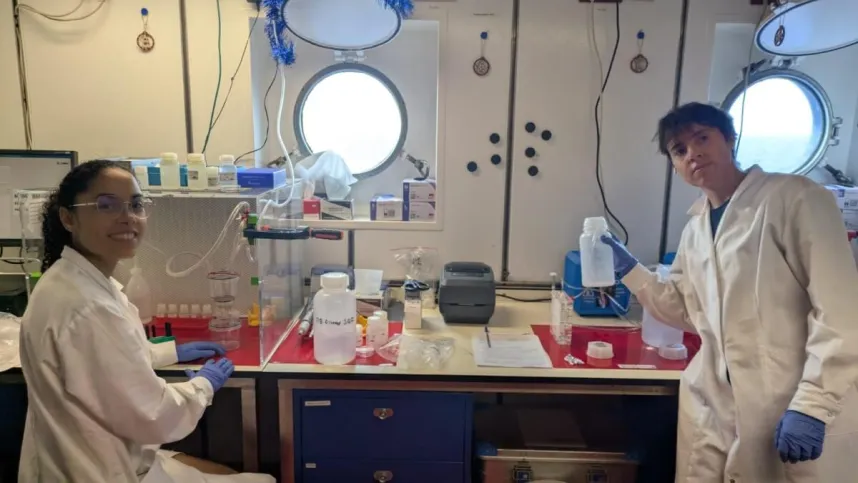Caught between drought and red tape: real-life research aboard the Meteor
When cutting-edge environmental research collides with the most-extreme drought on record and a maze of bureaucratic red tape, the result is a high-stakes expedition marked by scientific urgency and logistical complexity. For Caitlyn Kelly, an Earth and Environmental Sciences undergraduate at Constructor University, five weeks aboard the research vessel Meteor, the trials and tribulations of the research trip was not only a lesson in geochemistry, but in the complex dance between science, nature and policy. While collecting vital data where the Amazon meets the sea was challenging enough, the team faced daily battles with unpredictable ocean conditions—and with shifting regulations and reluctant authorities ashore.
The expedition, led by Professor Dr. Andrea Koschinsky, took place in December 2024 as part of the international GEOTRACES program. A team from Constructor University joined the Meteor for Expedition M206 off the Brazilian coast, with a mission to study how the Amazon River plume and neighboring mangrove ecosystems influence the transport of nutrients and pollutants into coastal regions and the Atlantic Ocean.
For Koschinsky, integrating students like Kelly into real-world expeditions is more than a teaching tool—it’s a philosophy. “Whenever it’s feasible, I make it happen. It’s an incredible opportunity for young people to experience science in action,” says the geochemist. But this expedition, her second to the region since 2018, was anything but routine. The Amazon—normally the planet’s most voluminous river—was suffering the effects of an extreme drought. Where there would typically be a powerful outflow of freshwater carrying nutrients and trace metals like iron, cobalt and copper far into the ocean, now there was only sluggish, salt-laced water. “We were witnessing a massive ecological crisis,” Koschinsky explained.
Unprecedented conditions and insurmountable bureaucracy
The impact on the surrounding ecosystems was stark. In the mangrove belt south of the river mouth, salinity levels were so high they exceeded those in the open ocean. “At first, we thought our equipment was malfunctioning,” recalls Koschinsky. Such extreme conditions raise troubling questions about the long-term viability of these vital ecosystems. Mangroves are crucial to the health of the delicate Amazonian ecosystem: they act as nurseries for fish, protect shorelines from erosion and store significant amounts of carbon. While they’re adaptable to changing salinity, the long-term effect of severely reduced freshwater input is still unknown.
While the ecological obstacles were challenging enough, administrative reluctance further complicated the trip. As the drought had drastically altered the Amazon’s flow, the research team had to adjust their original route in order to get the required samples. This deviation from the agreed upon course daily renegotiations with Brazilian authorities just to gain permission to collect samples. “We had to re-justify our work every single day,” Koschinsky says. “It became a logistical game of cat-and-mouse.”
Despite these challenges, the team managed to collect water samples from various depths within the river and in the critical mixing zones where freshwater meets saltwater. These samples help measure the distribution of trace metals and assess how human activity is altering baseline environmental conditions. “The human footprint is now so large that it’s becoming difficult to determine what’s still natural and what’s already extreme,” Koschinsky notes.
After spending some time in logistical limbo, the samples have since arrived in Bremen, where their analysis will keep researchers busy for months to come. For Caitlyn Kelly, the expedition was both an academic milestone and a personal journey. She collected samples herself and used them in her bachelor’s thesis, which examined copper-binding organic molecules—compounds that determine whether copper is bioavailable or toxic to marine organisms. Her data showed significant deviations from those collected during the wetter 2018 expedition, highlighting the influence of reduced freshwater inflow.
Meanwhile, one of Kelly’s peers from Koschinsky’s research group is now aboard another research vessel, the Sonne, conducting parallel studies in the Southwest Pacific. The research continues—across oceans, seasons and bureaucracies.
